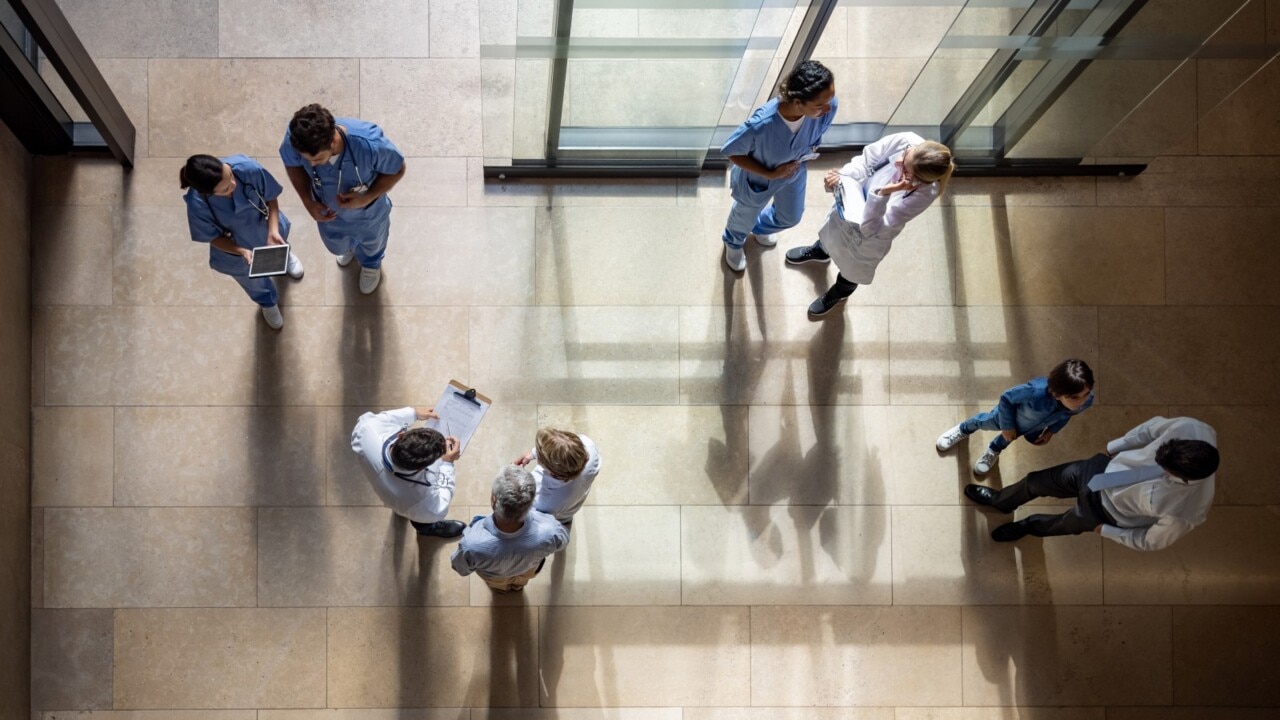NSW Budget 2023: Total cost of public sector wage rises revealed
One group of workers will be eligible for a slice of $8 billion in pay rises over the next four years, with wages to soon cost the state a whopping $55 billion a year.

Breaking News
Don't miss out on the headlines from Breaking News. Followed categories will be added to My News.
Labor’s signature election promises to boost the salaries of about 400,000 public sector wages has cost the government a massive $8bn over the next four years, with the total cost of government wages set to hit nearly $50bn this financial year and continue growing.
Across Australia, the majority of public sector employees have been given a 4 per cent pay bump, which also includes a 0.5 per cent boost to superannuation, with the teachers across the state getting a larger boost.
Handing down the 2023-24 NSW budget on Tuesday, most of the pay rises for employees in the state’s public service, nurses, midwives, and healthcare workers, will come at a $2.5bn cost to taxpayers from the 2023-24 to 2026-27 financial years.
A further $1.9bn was allocated to wage negotiations with the NSW Teacher’s Federation, which will increase salaries for graduate teachers by 12.2 per cent, taking their cohort from the worst to the highest paid in Australia.
According to budget figures, the total bill for government wages and superannuation will increase to $44.1bn in 2023-24, or $1.554bn more than estimates from the year prior.
Budget papers said the state’s wage expenses were expected to grow by an average of 4.1 per cent year-on-year, with the government spend projected to hit $55.627bn by 2026-27.

Protracted and at times rocky negotiations with the Health Services Union also resulted in lower paid members, like hospital cleaners and security staff get pay rises of up to 10 per cent, while higher paid members like allied health professionals received smaller benefits.
Figures released by the NSW Public Service Commission also indicated that about 50,000 healthcare workers would get wage boosts of about $3500.
Since winning government, NSW Labor has promised to sit down and negotiated with employees, and their unions and industry bodies when it came to their pay rises, however the budget has also identified public sector wages as a “general expense risk”.

“As the government shifts to a more consultative interest-based bargaining arrangement, it is possible that the final budget outcome for 2023-24 deviates from current projections,” it said.
However, in theory, the $3.6bn Essential Services Fund will be able to fund increased wage negotiations as they arise.
This comes as the NSW Police Force and paramedics in the public health system have yet to confirm negotiations.
NSW’s boost to public sector wages will likely be criticised by the Opposition, who claim it was funded at the expense of infrastructure cuts. However, NSW Treasurer Daniel Mookhey said they were paid through a Comprehensive Expenditure Review which redirected more than $13bn in savings towards essential services and cost-of-living relief for families.

“If we continue to do what we did in the last 12 years, which is to hold down pay and conditions, more of those essential workers will leave,” he said.
On Tuesday, Finance Minister Courtney Houssos said this included measures like freezing the pay of politicians and senior government bureaucrats, ending Covid programs and reducing the government’s reliance on external consultants.
In a breakdown of full-time NSW public sector workers, about 36 per cent were employed in healthcare, followed by 20 per cent in the public service, and 19 per cent in teaching. The remainder were made up of people employed by the police (6 per cent), transport (4 per cent) and other industries (15 per cent).
Unions NSW Secretary Mark Morey said the wages boost would ensure essential workers remain in NSW and don’t travel interstate to seek more lucrative roles.
“Paying public sector workers enough to attract and retain them is absolutely critical to our state,” he said.
“The morale and goodwill of these workers was absolutely cratered by the Liberals. This Budget is the beginning of the rebuild.
“We won’t fix the essential worker shortage immediately, but we will make a dent in it.”
NSW Opposition Leader Mark Speakman questioned whether the government was able to fund the wage increases through productivity offsets.
“The wage bill is open ended,” he said.
“They’ve opened Pandora’s box. They’ve given the teachers an eight to 10 per cent pay rise and you’d expect other public sector employees to come knocking on the door for similar pay rises.”
Originally published as NSW Budget 2023: Total cost of public sector wage rises revealed


